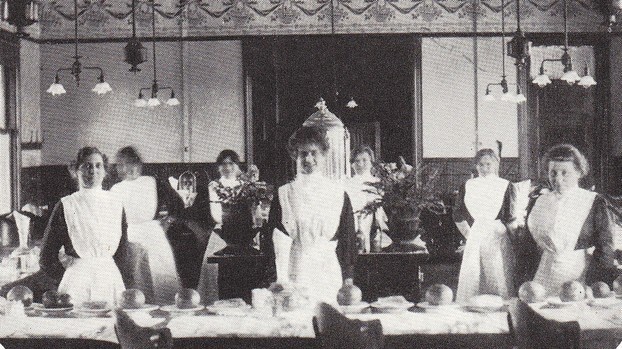Victorian Life
Railroad Adventures
It’s finally summer and folks are starting to travel again. Most seem to prefer the quick (although tedious) plane option, but others are, more and more, opting for the leisurely rail adventure. Their motto is, “Getting there is half the fun.”
Our Victorian ancestors did not have a choice – airplanes were not around yet! Although it beat the wagon train, rail travel was not the leisurely , restful experience, replete with fine food and drink and private sleeping compartments, now available. As westward expansion spread across the United States, passengers often spent days on board non-air conditioned trains with few, if any, amenities and common conveniences. There was definitely no dining car or lounge! There were also no coolers or any refrigeration. A picnic basket might sustain a traveler for a day or so, but after that one had to fend for themselves. At regular train stops passengers had thirty minutes to get off the train, get something to eat, and get back on the train. Any vendors at the stop could exploit a weary traveler with high prices and poor food. What choice did a traveler have? This dilemma was the inspiration for the Harvey Girls.
Fred Harvey and his friend, Tom Gable, stopped in Raton, New Mexico, and found the “restaurant” there to be a chaotic mess. Tom thought they should add women to the staff, as they were reliable, efficient and effective employees. Fred agreed, and opened his first restaurant along the rail line in Leavenworth, Kansas. He was then able to contract with the Atchison, Topeka and the Santa Fe rail line, and was able to open restaurants from New York to New Mexico.
Hundreds of thousands of young women answered Fred Harvey’s newspaper advertisements, and left their homes – and poverty – behind to work for Harvey House restaurants. Fred required women to be between the gages of 18 and 30, single, of good character, well mannered, attractive and with at least an eighth grade education. When hired, each waitress signed a six month contract to work at a particular stop. After six months, they could remain at that restaurant or apply to work at a different location. Many opted to put down roots and remain at one restaurant indefinitely. Some even started a family and a tradition in which daughters eventually followed their mothers and became Harvey girls.
Railroad workers kept in touch with each restaurant by telegraph so that the restaurant would know if the train would be late and how many hungry passengers they would need to plan for. During WWII, Harvey House restaurants also served troop trains. Fred Harvey’s restaurants and lunchrooms, a family business, continued until the death of Fred’s grandson in 1965. It was at this point that automobile travel became more popular, and the “road trip” with its many stops along the local interstate roads became the vogue.
However, Fred Harvey, with his Harvey girls, can be credited as starting the first restaurant chain. The “girls” can be credited as being pioneers as the original Harvey girls worked outside the home when few did, and they traveled west into the frontier searching for independence and a better life. They were able to start careers and support themselves. What a concept! Hats off to the Harvey girls!


